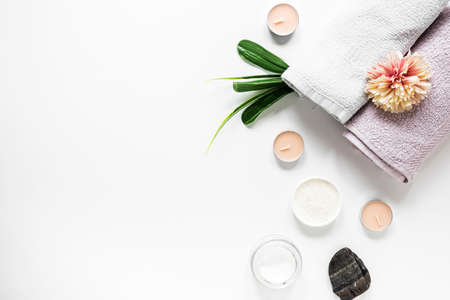Understanding Dark Circles and Puffy Eyes
Dark circles and puffy eyes are common concerns that affect people of all ages, often making us look tired or stressed even when we’re feeling our best. But what really causes these frustrating under-eye issues? Several factors can play a role. Genetics is one of the most significant contributors—if your parents have dark circles or puffiness, you might notice them too. Allergies are another frequent trigger, as they can lead to inflammation and swelling around the eyes. Our daily habits also matter; lack of sleep, dehydration, excessive salt intake, and even staring at screens for long periods can make dark circles and puffiness more noticeable. Finally, aging is a natural factor: as we get older, our skin loses collagen and becomes thinner, making blood vessels more visible and fluid retention more likely. Understanding these underlying causes is the first step in figuring out which remedies—natural or otherwise—might actually help reduce dark circles and puffy eyes.
Popular Natural Remedies Explored
When it comes to addressing dark circles and puffy eyes, natural remedies have gained considerable popularity, especially among those seeking gentle and accessible solutions. Let’s take a closer look at some of the most widely recommended natural options, their cultural relevance in the U.S., and what they’re believed to offer.
Cucumber Slices
Cucumber slices are a classic go-to for many Americans who want to soothe tired eyes. The cool temperature and high water content of cucumbers are thought to help reduce swelling and provide a refreshing feeling. Many believe that placing cold cucumber slices over the eyes can help temporarily lessen puffiness and gently hydrate the delicate under-eye area.
Cold Tea Bags
Another popular remedy is using cold tea bags, particularly green or black tea. These teas contain caffeine and antioxidants, which are said to constrict blood vessels and decrease inflammation. Placing cooled, used tea bags on closed eyelids is a common tip in American beauty routines for giving the eyes a more awake appearance.
Aloe Vera
Aloe vera gel is renowned for its soothing properties. In the U.S., it’s often applied topically for various skin concerns, including under-eye puffiness. Aloe vera is believed to hydrate the skin and provide a cooling sensation that can help calm irritation and reduce swelling under the eyes.
Coconut Oil
Coconut oil has become increasingly popular in American households for both culinary and skincare uses. When it comes to dark circles, some people gently massage coconut oil under their eyes before bed, hoping its moisturizing qualities will soften fine lines and diminish discoloration over time.
Comparison of Popular Natural Remedies
| Remedy | Main Benefit | Common Application Method |
|---|---|---|
| Cucumber Slices | Soothes & reduces puffiness | Place chilled slices on closed eyes for 10–15 minutes |
| Cold Tea Bags | Reduces swelling & brightens eyes | Apply cooled, used tea bags on eyelids for 10–15 minutes |
| Aloe Vera Gel | Cools & hydrates under-eye area | Lightly dab gel under the eyes as needed |
| Coconut Oil | Moisturizes & softens skin; may lighten dark circles over time | Massage a small amount under eyes before bed |
While these remedies are beloved by many for their simplicity and natural appeal, it’s important to remember that results can vary from person to person. In the next section, we’ll explore whether scientific evidence supports these methods—and if they truly deliver on their promises.
![]()
3. What the Science Says
When it comes to natural remedies for dark circles and puffy eyes, its important to look beyond trending tips on social media and see what scientific research and experts actually say. While plenty of people swear by home remedies like cucumber slices, cold tea bags, or aloe vera gel, the real question is: do these methods really work, or are their effects more anecdotal than proven?
Current research suggests that some ingredients commonly found in home remedies can offer mild, temporary relief. For example:
Caffeine and Antioxidants
Caffeine (found in tea bags) has been shown in some studies to reduce swelling by constricting blood vessels, while antioxidants can help fight inflammation. However, most evidence comes from small-scale studies or topical products designed for the eye area—not necessarily from DIY kitchen remedies.
Cold Compresses
The science behind cold compresses is straightforward: cold temperatures can reduce swelling and temporarily tighten skin by constricting blood vessels. This may explain why chilled spoons or cucumber slices feel soothing, but the effect is usually short-lived and doesnt address underlying causes of dark circles or puffiness.
Expert Opinions
Dermatologists and skincare professionals often emphasize that while these natural remedies are generally safe for most people and may provide a refreshing pick-me-up, they are not a cure-all. Experts point out that genetics, aging, allergies, dehydration, and lack of sleep play a much bigger role in persistent under-eye concerns than what you put on your skin for a few minutes.
Are Results More Anecdotal?
In summary, while there’s some scientific basis for the temporary benefits of certain natural remedies—mainly due to cooling effects or mild anti-inflammatory properties—most results remain anecdotal. If you’re hoping for a dramatic transformation, managing expectations is key. For long-term improvements, addressing lifestyle factors and considering dermatologist-recommended treatments may be more effective than relying solely on at-home solutions.
4. Safe Tips for Trying Natural Remedies at Home
Before you jump into using natural remedies for dark circles and puffy eyes, it’s important to prioritize safety. While home treatments can be gentle, everyone’s skin reacts differently—especially the sensitive under-eye area. Here are some practical guidelines to help you safely try these remedies and know when to consider other options.
Guidelines for Safely Testing Natural Remedies
- Patch Test First: Always test any new remedy on a small area of your inner arm before applying it near your eyes. Wait 24 hours to check for redness or irritation.
- Use Clean Tools and Ingredients: Make sure your hands, utensils, and ingredients (like cucumbers or tea bags) are clean and fresh to avoid introducing bacteria near your eyes.
- Avoid Harsh Substances: Stay away from lemon juice, undiluted essential oils, or anything that can sting or burn the delicate skin around your eyes.
What to Watch Out For
| Warning Sign | What It Means | What To Do |
|---|---|---|
| Irritation or Redness | Your skin may be reacting negatively | Stop use immediately and rinse with cool water |
| Swelling Increases | The remedy may not suit your skin type | Discontinue use; try a gentler option |
| Pain or Burning Sensation | The product is too harsh for your skin | Rinse thoroughly; if persistent, consult a healthcare provider |
When Should You Consider Other Options?
- If natural remedies don’t improve your dark circles or puffiness after 2–4 weeks, it may be time to explore other solutions.
- If you experience persistent irritation, swelling, or discoloration, consult a dermatologist.
- If your symptoms are severe or accompanied by pain, vision changes, or infection signs, seek professional medical advice promptly.
Expert Tip:
If you have allergies, eczema, or very sensitive skin, always check with your healthcare provider before trying any home remedy—even if it seems harmless. Taking these precautions ensures you enjoy the benefits of natural care while minimizing potential risks.
5. When to Seek a Dermatologist’s Advice
While natural remedies can be helpful for mild, occasional dark circles and puffy eyes, it’s important to know when these symptoms might signal something more serious. If you notice that your puffiness or discoloration is persistent—meaning it doesn’t improve with home care or lifestyle changes—it may be time to consult a dermatologist. Sometimes, what appears to be simple under-eye bags or darkness could actually be linked to underlying skin conditions, allergies, or even health issues like thyroid disorders.
Pay close attention to any new or sudden changes in the skin around your eyes. For example, if you see rapid swelling, intense discoloration, itching, pain, or if the area feels hot to the touch, these are signs that warrant professional evaluation. In some cases, chronic puffiness and dark circles may be genetic or related to aging, but a dermatologist can help rule out other causes and recommend targeted treatments that go beyond what at-home remedies can offer.
If over-the-counter creams and natural solutions aren’t making a difference after several weeks—or if your symptoms are affecting your confidence or daily life—don’t hesitate to reach out for expert advice. A board-certified dermatologist can assess your skin’s health and provide personalized recommendations, whether it’s prescription treatments, in-office procedures, or tips for better skincare routines tailored just for you.
6. Everyday Lifestyle Habits for Brighter Eyes
While natural remedies can provide a helpful boost, long-term results for dark circles and puffy eyes often come down to your everyday lifestyle choices. Here are some simple wellness habits that can make a visible difference over time.
Prioritize Consistent Sleep
Getting enough quality sleep is one of the most effective ways to prevent and reduce under-eye darkness and puffiness. Aim for 7-9 hours per night and try to stick to a regular bedtime routine—even on weekends. Elevating your head with an extra pillow can also help reduce fluid buildup around your eyes.
Stay Hydrated
Dehydration can make under-eye circles appear darker and cause puffiness. Make it a habit to drink plenty of water throughout the day—most experts recommend about eight 8-ounce glasses daily, but individual needs may vary. If you’re active or live in a dry climate, you might need more.
Manage Stress Effectively
Chronic stress can disrupt sleep and contribute to unhealthy skin. Incorporate stress management techniques like deep breathing, meditation, yoga, or simply taking a few moments each day for self-care. Your mind and your eyes will thank you.
Eat a Nutrient-Rich Diet
Your diet plays a crucial role in skin health. Focus on foods rich in vitamins C and E, antioxidants, and healthy fats—like berries, leafy greens, nuts, and salmon—to support collagen production and fight inflammation that can worsen dark circles and puffiness.
Avoid Excess Salt and Alcohol
Too much salt or alcohol can cause your body to retain water, leading to puffier eyes in the morning. Try to limit processed foods, salty snacks, and excessive drinking—especially before bedtime.
Cultivating these daily habits takes time, but the payoff is brighter, healthier-looking eyes—and overall wellness. Small changes really do add up when it comes to reducing dark circles and puffy eyes naturally.


